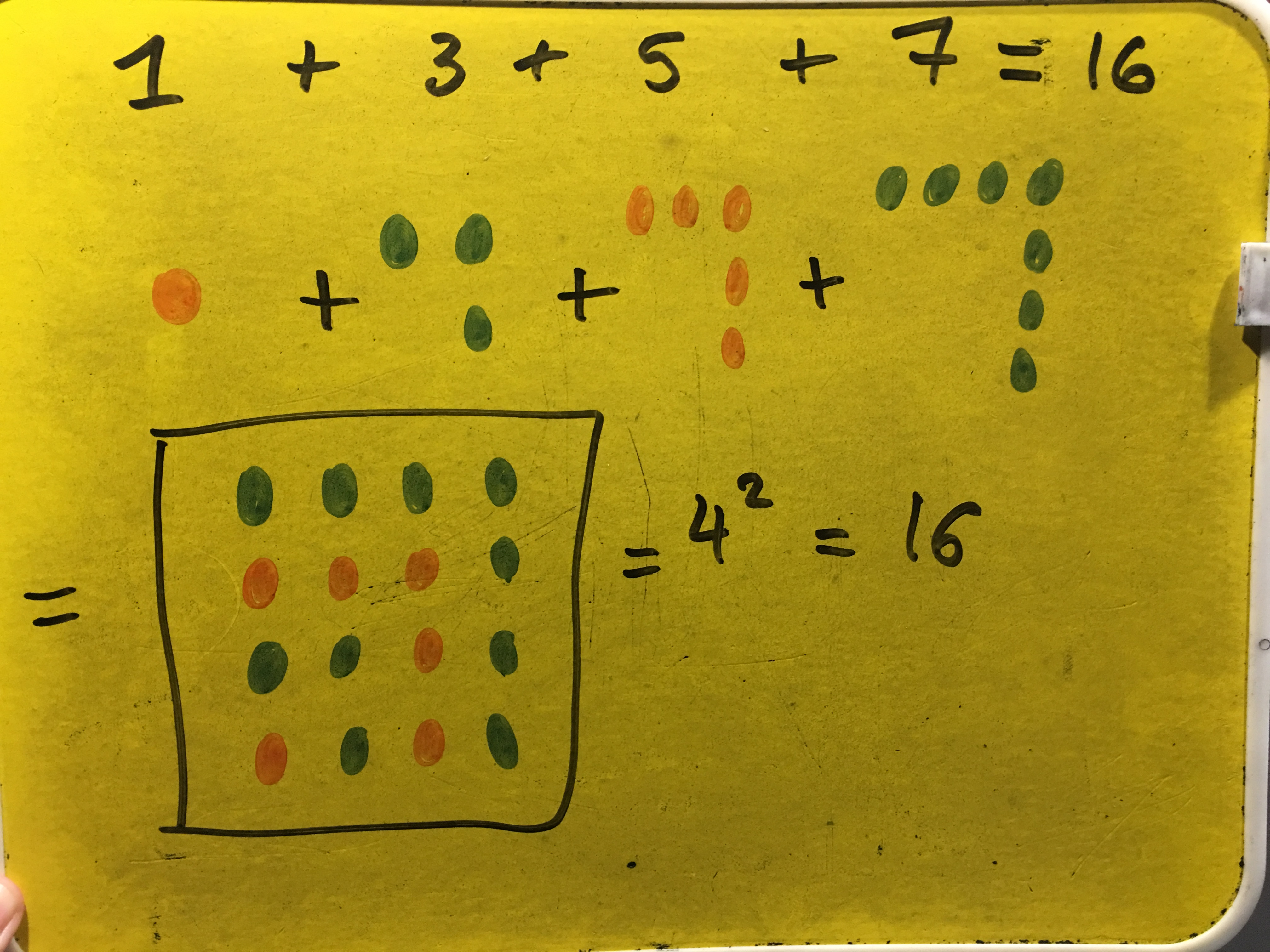Or search by topic
Number and algebra
Geometry and measure
Probability and statistics
Working mathematically
Advanced mathematics
For younger learners
Adding Odd Numbers



- Problem
- Student Solutions
- Teachers' Resources
Shubhangee from Buckler's Mead Academy in England and Sunhari from British School Muscat sent diagrammatic proofs. This is Shubhangee's proof:

Moncef from London Academy in Morocco constructed a similar but slightly different proof to the one in the proof sorter. Click here to see Moncef's proof.
Sunhari also submitted a proof by induction:
Let P($n$) be the statement 'the sum of the first $n$ odd numbers is equal to $n^2$.
P(1): 1 = 1^2
P(1) is true.
Suppose it is true for P($k$),
$1+3+… +(2k-1) = k^2$
Then, P($k+1$)
$1+3+…+[2(k+1) -1]
\\= k^2 + [2(k+1) -1]
\\= k^2 + 2k +2 -1
\\= k^2 + 2k + 1
\\= (k+1)^2$
Therefore whenever P($k$) is true, P($k+1$) is also true. So since P(1) is true, P(2) must also be true, and so P(3) must also be true, and so on. This means P($n$) must be true for all positive integers $n$.
You may also like
Adding All Nine
Make a set of numbers that use all the digits from 1 to 9, once and once only. Add them up. The result is divisible by 9. Add each of the digits in the new number. What is their sum? Now try some other possibilities for yourself!
Doodles
Draw a 'doodle' - a closed intersecting curve drawn without taking pencil from paper. What can you prove about the intersections?

